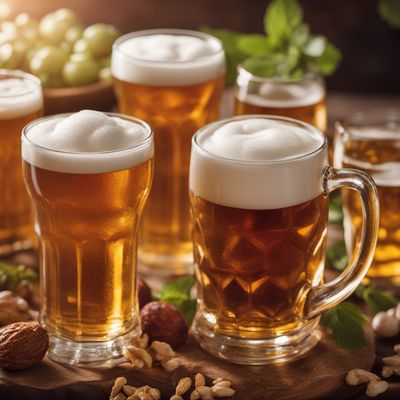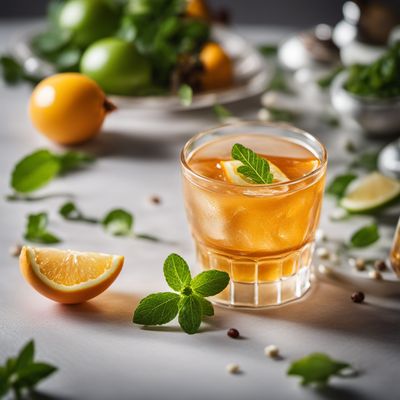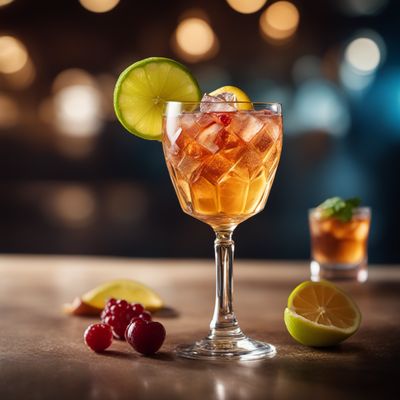
Ingredient
Alcoholic beverages
The Art of Mixology: Unleashing the Flavors of Alcoholic Beverages
Alcoholic beverages encompass a vast array of drinks, including beer, wine, spirits, and cocktails. They are created through the fermentation or distillation of various ingredients, resulting in a diverse range of flavors, aromas, and alcohol content. Whether it's the hoppy bitterness of an IPA, the fruity notes of a Chardonnay, or the smoky richness of a whiskey, alcoholic beverages offer a sensory journey for the palate. They can be enjoyed on their own, used as a base for cocktails, or paired with food to enhance the dining experience.
Origins and history
The origins of alcoholic beverages can be traced back thousands of years, with evidence of early fermentation techniques found in ancient civilizations such as Mesopotamia and Egypt. Throughout history, different cultures have developed their own unique methods of producing alcoholic beverages, using locally available ingredients and traditional techniques. Alcoholic beverages have played significant roles in religious ceremonies, social gatherings, and cultural celebrations, often symbolizing abundance, hospitality, and the art of craftsmanship.
Nutritional information
Alcoholic beverages vary in their nutritional content depending on the specific type and ingredients used. They generally provide calories from alcohol, carbohydrates, and, in some cases, small amounts of protein and fat. It's important to consume alcoholic beverages in moderation and be mindful of their calorie content, as excessive consumption can contribute to weight gain and other health issues.
Allergens
Some alcoholic beverages, particularly those made from grains such as beer and whiskey, may contain gluten and can be problematic for individuals with gluten sensitivities or celiac disease. Additionally, some people may have allergies or intolerances to specific ingredients used in certain alcoholic beverages, such as grapes in wine or juniper berries in gin. It's essential to read labels and consult with a healthcare professional if you have any concerns or dietary restrictions.
How to select
When selecting alcoholic beverages, consider the occasion, personal preferences, and intended use. For wines and spirits, look for bottles with intact seals, clear labels, and no signs of leakage or damage. For beer, check the freshness date and opt for cans or bottles stored in a cool, dark place. Consider exploring different styles, regions, and producers to expand your palate and discover new favorites.
Storage recommendations
To maintain the freshness and quality of alcoholic beverages, store them in a cool, dark place away from direct sunlight, heat, and temperature fluctuations. Wine should be stored horizontally to keep the cork moist and prevent oxidation. Opened bottles of spirits can be stored upright, tightly sealed, and away from strong odors. Once opened, most alcoholic beverages are best consumed within a certain timeframe to preserve their flavors and aromas.
How to produce
Producing alcoholic beverages at home requires specialized knowledge, equipment, and adherence to legal regulations. While brewing beer or making wine can be a rewarding hobby, it's essential to follow established recipes, sanitation practices, and fermentation guidelines to ensure a safe and enjoyable end product. For those interested in mixology, experimenting with cocktails allows for creativity and customization using a variety of spirits, mixers, and garnishes.
Preparation tips
Alcoholic beverages can be enjoyed in various ways, depending on personal preferences and the specific drink. Wine can be paired with food to enhance flavors, while spirits can be enjoyed neat, on the rocks, or used as a base for cocktails. Experimenting with different mixers, garnishes, and serving techniques can elevate the drinking experience. When preparing cocktails, use fresh ingredients, quality spirits, and proper measurements to achieve a well-balanced and flavorful result.
Culinary uses
Alcoholic beverages are widely used in culinary applications, adding depth and complexity to dishes. Wine is commonly used in marinades, sauces, and reductions, while beer can be incorporated into batters, stews, and bread recipes. Spirits are often used in desserts, flambéed dishes, and as flavorings in various recipes. Cocktails offer endless possibilities for creative combinations and can be tailored to complement specific flavors or themes.
Availability
Alcoholic beverages are available worldwide, with different regions specializing in specific types of drinks. Wine-producing countries include France, Italy, Spain, the United States, and Australia. Beer is brewed and enjoyed in countries such as Germany, Belgium, the United Kingdom, the United States, and Mexico. Spirits have global popularity, with whiskey originating from Scotland and Ireland, vodka from Russia and Poland, rum from the Caribbean, and tequila from Mexico.
More ingredients from this category

Beer and beer-like beverage
The Golden Brew: Beer and Beer-like Beverage

Liqueurs
The Art of Liquid Indulgence

Wine and wine-like drinks
The Art of Fermentation: Exploring the World of Wine and Wine-like Drinks

Mixed alcoholic drinks
The Art of Mixology: Crafting Exquisite Alcoholic Concoctions

Edible alcohol
The Spirit of Culinary Delights

Unsweetened spirits
The Essence of Pure Flavor: Unsweetened Spirits